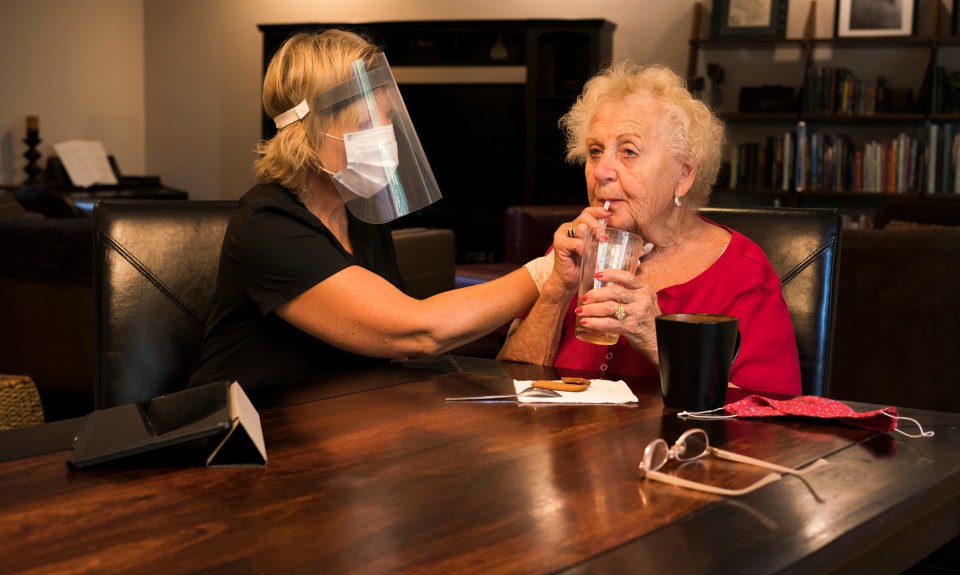A swallowing disorder, also known as dysphagia, affects a person’s ability to eat or drink. While severity of impairments can vary, common symptoms may include difficult chewing or moving food around the mouth, the sensation of food or pills getting stuck in the throat or something “going down the wrong pipe” that causes coughing/choking episodes.
If someone you know has been diagnosed with a swallowing disorder, it may be hard to understand because the person may still appear “normal.” That is, there may be no outward distortion that can be seen, unlike when someone tells you they have a broken bone. The fact that people with dysphagia look normal can create misunderstandings amongst loved ones and feelings of isolation for the individual themselves as they try to navigate life with their swallowing challenges. Below is a sample roadmap for those who have been or know someone who has been diagnosed with a swallowing disorder.
Doctor, what is the plan?
After receiving a diagnosis of a swallowing disorder, you should first have a discussion with your doctor about its cause. This is important because dysphagia is a symptom of a larger disease process. For example, a person may have sudden difficulty swallowing after a stroke or a have a gradual decline in swallow function in progressive conditions such as Parkinson’s disease or dementia.
Determining the cause of the swallowing difficulties is a crucial first step so you can have candid conversations with your doctor about the expected course of swallow function over time, and equally important, discuss any advanced directives or wishes that you have related to eating and drinking, so that these may be incorporated into your individualized treatment plan.
Seeing the invisible
Your doctor may recommend that you have a swallow study to help develop a treatment plan. Best practice is to complete at least one imaging study; these imaging studies allow your healthcare team to “see the invisible” or what is happening in your mouth and throat as you swallow.
At this time, there are two widely used imaging studies for swallowing disorders: the Videofluroscipic Swallowing Study (VFSS) and the Fiberoptic Endoscopic Evaluation of Swallowing (FEES). In both of these studies, you will be awake and instructed to consume various food and liquid consistencies with the goal of identifying the muscle groups contributing to your swallowing difficulties. With the VFSS test, this is accomplished with an X-Ray video, while the FEES test uses a small camera that has been passed through your nose and into your upper throat.
Treatment options
You may be referred to therapy to improve your swallowing. A speech-language pathologist (SLP) is a professional trained to work with swallowing disorders. The SLP will review your imaging study and discuss your wishes and goals to tailor an individualized treatment program. Your treatment can differ based on the imaging study results and the nature or course of your healthcare condition. Generally, a treatment plan includes:
- Exercises to rehabilitate the strength, coordination and/or timing of the muscles involved in swallowing
- Education and training on the strategies that can make swallowing easier or decrease symptoms, such as changes in positioning or modifying textures of foods or liquids
- A combination of the above
Swallowing treatments can include different treatment modalities, including surface electromyography, neuromuscular stimulation or even evidence-based treatment programs such as the McNeil Dysphagia Therapy Program. Be sure to ask an SLP about the modalities they offer and how each modality may or may not be indicated for your specific swallowing impairment. In addition, discuss the frequency of the therapy you will receive, as different settings offer different options. For example, if you receive swallowing therapy at an inpatient rehabilitation facility, you could receive an hour of swallowing therapy per day up to five days a week during the duration of your stay.
Navigating life with dysphagia
Navigating life with dysphagia can have its challenges, but developing an understanding and roadmap about the steps that can be taken makes it more straightforward. Open communication with your healthcare team about your symptoms, experiences, goals and wishes is always the best direction.
Additional resources can be found at the National Foundation of Swallowing Disorders. Both online and in-person support groups can be found there and can help you connect with others sharing similar experiences, making your journey more palatable.
Alicia Swain is a speech language pathologist at Encompass Health Rehabilitation Hospital, The Vintage
The content of this site is for informational purposes only and should not be taken as professional medical advice. Always seek the advice of your physician or other qualified healthcare provider with any questions you may have regarding any medical conditions or treatments.



